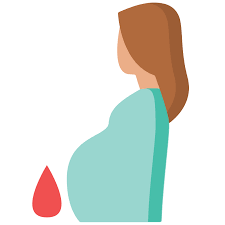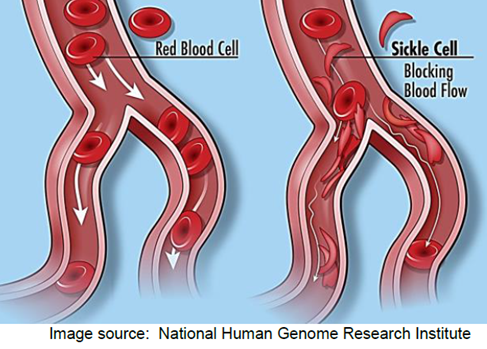In this blog, I’ll be reviewing the purpose of a literature search and the importance of employing a systematic approach. I’ll highlight search strategies and offer some search tips. I’ll also identify some common databases used in the field of healthcare law, review different types of publications, as well as ways to access authoritative literature. Lastly, I’ll highlight the various levels of evidence and how synthesis of your search findings can be applied to work products.
Evidence and standards of care: Both are evolving faster than ever before and staying current is essential to ensure the best patient care that results in safe outcomes. The volume and complexity of medical literature is growing rapidly. Employing a systematic literature search strategy ensures an efficient and comprehensive approach to acquiring the information that you or your client requires.
What’s the Purpose of a Literature Search: The primary purpose is to obtain factual and current information that supports the standards of care. The acquired knowledge from a literature search can be used to educate yourself, your clients, expert witnesses (can result in impeachment of the expert witness) and the jury. Additionally, a number of medical consultants utilize literature searches to identify possible expert witnesses.
Barriers to Systematic Literature Searches: These range from lack of time, lack of knowledge/lack of searching skills, lack of motivation and information overload.
What’s a Search Strategy? This is a plan that helps locate the information being searched for.
A literature search strategy is an intellectual and practice focused endeavor. The process should start with a clinical question, followed by a formal written search strategy.
The Clinical Question: Use key words from a clinical question to guide the literature search. Use of the PICOT format guides search success. This is a process in which clinical questions are phrased in a manner that yields the most relevant information from a search. P = patient population, I = intervention or issue of interest, C = Comparison intervention or status, O = outcome, T = timeframe for (I) to achieve (O).
- Example Clinical (PICOT) Question: In newborns who meet inclusion criteria for therapeutic hypothermia (P), does passive cooling, (I) compared to not being passively cooled, (C) result in a lower incidence of neonatal encephalopathy O) if implemented within the first 6 hours of life (T)?
- Note: Keywords to be used in the literature search are highlighted.
Written Search Strategy: Use of a literature search tool will help you track your original search, and refined searches. This method allows you to track your keywords, synonymous words, Boolean phrases used (will be discussed below), the search engine(s) used, and the number of sources your search yielded
- (See Literature Search Tool attached)
Know What Type of Service or Resource is Needed Before you Begin your Search: The type of service or resource is going to guide the source you retrieve information from.
- Textbooks: A good resource forfactual information. Textbooks contain summaries of known established facts from previously published literature as well as new material from the author.
- Learn about the resources your local medical library offers. Many medical textbooks can be found within a medical library.
- Inquire about the availability of an interlibrary loan service if the library doesn’t own a specific textbook (or journal) you’re looking for. The library can get the textbook from another library.
- “Doody’s Core Titles” is a listing of authoritative textbooks.
- Databases: To locate new or changing information use databases to search for medical or journal articles.
- Know the Databases: Each database covers its own range of journals and each has its own search protocol.
- Multiple relevant databases should be searched systematically
- Commonly Used Online Databases (not an inclusive list):
- 1. MEDLINE/PubMed: http://www.ncbi.nlm.nih.gov/pubmed
This database is free, however, can be over-whelming as it has over 35 million references. The database provides full text articles in over 5,500 journals. This database serves as a flagship database for journal articles in health sciences.
2. Cumulative Index to Nursing and Allied Health Literature (CINAHL Plus): http://www.ebsco.com/products/research-databases/cinahl-plus
This is a comprehensive database specific to nursing and allied health research offering more than 770 journals and full text articles.
How Do You Gain Access to Databases?: Through the use of the internet, subscription through work or home, medical library, private or public library, freelance librarian or a database vendor (E.g., Ovid technologies, HealthSource, ProQuest, SNT).
How Can Membership in Professional Organizations Assist with Literature Searches? Through active membership, you have access to published journals, practice bulletins and committee opinions. Additionally, with active membership, you’re better positioned to remain current with the evolving evidence and standards of care. Examples of professional organizations: American Medical Association (AMA), American Nurses Association (ANA), American Association of Nurse Practitioners (AANP), American College of Obstetricians and Gynecologists (ACOG), Association of Operating Room Nurses (AORN), etc.
Value in Building your Personal Reference Library: Through membership in professional organizations, you can quickly begin to build your own reference library. Many organizations circulate their published journals on a monthly or quarterly basis. These can be maintained for future reference in a hard or electronic copy. Over time, purchase authoritative textbooks that pertain to your specialty. If you’re uncertain which textbook to purchase, inquire with a consultant in the field, a clinician or educator.
When Synthesizing Information from your Search, Know the Levels of Evidence: Level of evidence refers to the degree that information can be trusted, based on study design. Many of you are familiar with the levels of evidence being represented as a pyramid with systematic reviews on top, followed by randomized controlled trials, then observational studies such as cohort studies or case controlled studies, with case studies and expert opinion at the bottom.
It’s important to correlate this pyramid to the notion that all evidence (information) is not created equal. When evaluating sources of evidence to use, you want to focus on high level (level 1-2) evidence. These high level sources of evidence help clinicians to translate research into practice, and inform clinician and patient decision making.
Importance in Knowing the Types of Publications:
- Peer reviewed publications are generally authoritative. Commonly used peer-reviewed journals (not an inclusive list):
- Industry, published by or about a particular industry is not consistently authoritative.
- Newsletters have general health information, but are not considered authoritative.
What is an Authoritative Source of Literature? Work known to be reliable because its authority or authenticity is widely recognized by experts in the field. These sources are generally accepted as controlling in the subject area.
How to locate authoritative textbook sources:
- Refer to “Doody’s Core Title’s”
- Look for textbooks placed in the library’s core, reference, or reserve collections
- Refer to publications used in medical and/or nursing schools, or teaching aids in hospitals
- Begin growing your personal reference library
How to locate authoritative journal articles:
- Review relevant content in the Cochrane Reviews. Cochrane Reviews is a collection of databases of systematic reviews and meta-analyses which summarize and interpret the results of medical research, technology assessments, and clinical trials for the purposes of making informed clinical decisions. http://www.cochrane.org/
- Check textbooks for relevant references to journal articles you may be able to use. Search for journal articles written by the authors of relevant textbooks.
- Consult with experts, specialists, authorities for names of authoritative publications or authors.
Other Search Tips:
- Determine how far back you want to go with your literature search.
- For standard of care issues, search the year the incident occurred.
- For causation issues, search the most current information.
- Validate information by cross-referencing with other sources.
- Use a filtered search strategy to narrow your search to peer reviewed sources.
- Consider synonymous terms to use in subsequent searches to yield a more robust, or more manageable search.
- Consider alternative relevant databases if your search, and refined searches, don’t yield results.
- The chosen database may require or allow for Boolean search operators.
- Use of the word “and” or a “+” sign between two or more words will narrow your search.
- Use of the word “or” or a “/” will broaden your search.
- Use of the word “not” or “-“ will indicate that the word shouldn’t appear in your search
- Use of the word “near” will indicate words that should be found close to each other in your search.
- Consider pleural and alternative spellings. E.g., splint, splints, labor, labour.
- Some databases allow you to search by author. This will help narrow your search.
A systematic literature search is an intellectual and practice focused endeavor that can be mastered over time.
If you have a medical related case that could be strengthened by a systematic literature search, but don’t know where to begin, contact Barber Medical Legal Nurse Consulting, LLC.
Resources:
Evidence Based Practice in Nursing and Healthcare, 4th ed. 2019. A Guide to Best practice.
How to Read a Paper, 6th ed. 2019. The Basics of Evidence-Based Medicine and Healthcare.
P.S. Comment and Share: How do you plan to integrate this information into practice?













